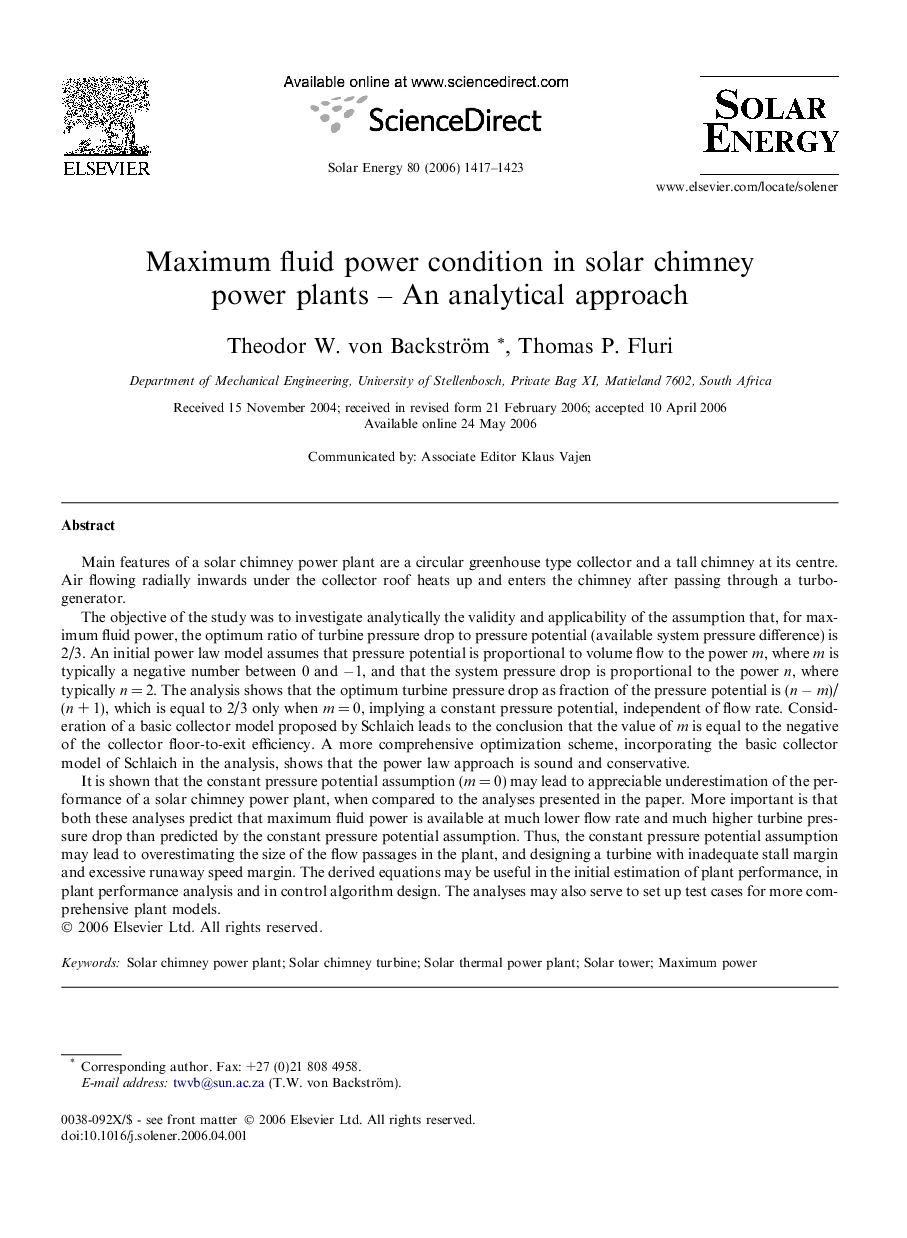| کد مقاله | کد نشریه | سال انتشار | مقاله انگلیسی | نسخه تمام متن |
|---|---|---|---|---|
| 1551857 | 998152 | 2006 | 7 صفحه PDF | دانلود رایگان |

Main features of a solar chimney power plant are a circular greenhouse type collector and a tall chimney at its centre. Air flowing radially inwards under the collector roof heats up and enters the chimney after passing through a turbo-generator.The objective of the study was to investigate analytically the validity and applicability of the assumption that, for maximum fluid power, the optimum ratio of turbine pressure drop to pressure potential (available system pressure difference) is 2/3. An initial power law model assumes that pressure potential is proportional to volume flow to the power m, where m is typically a negative number between 0 and −1, and that the system pressure drop is proportional to the power n, where typically n = 2. The analysis shows that the optimum turbine pressure drop as fraction of the pressure potential is (n − m)/(n + 1), which is equal to 2/3 only when m = 0, implying a constant pressure potential, independent of flow rate. Consideration of a basic collector model proposed by Schlaich leads to the conclusion that the value of m is equal to the negative of the collector floor-to-exit efficiency. A more comprehensive optimization scheme, incorporating the basic collector model of Schlaich in the analysis, shows that the power law approach is sound and conservative.It is shown that the constant pressure potential assumption (m = 0) may lead to appreciable underestimation of the performance of a solar chimney power plant, when compared to the analyses presented in the paper. More important is that both these analyses predict that maximum fluid power is available at much lower flow rate and much higher turbine pressure drop than predicted by the constant pressure potential assumption. Thus, the constant pressure potential assumption may lead to overestimating the size of the flow passages in the plant, and designing a turbine with inadequate stall margin and excessive runaway speed margin. The derived equations may be useful in the initial estimation of plant performance, in plant performance analysis and in control algorithm design. The analyses may also serve to set up test cases for more comprehensive plant models.
Journal: Solar Energy - Volume 80, Issue 11, November 2006, Pages 1417–1423